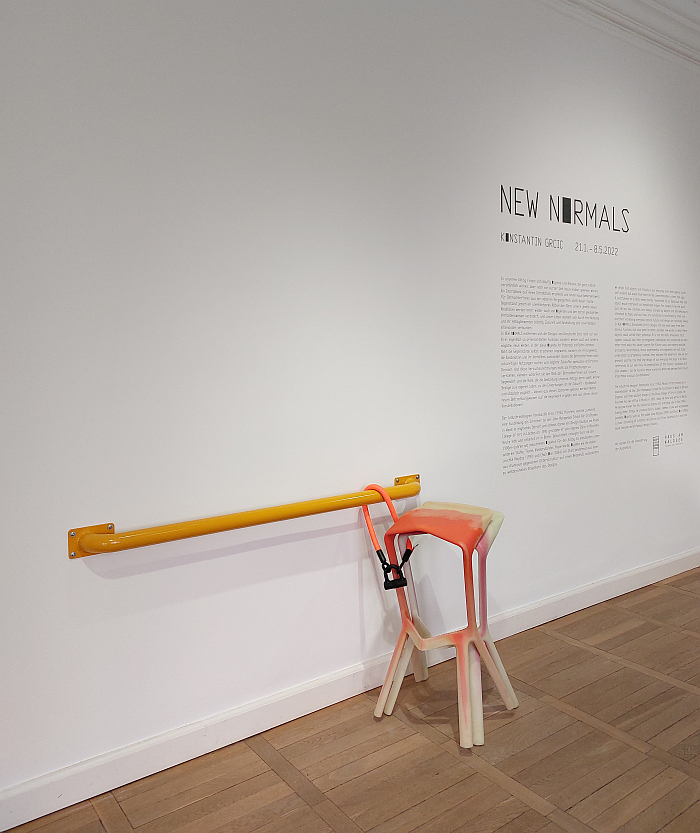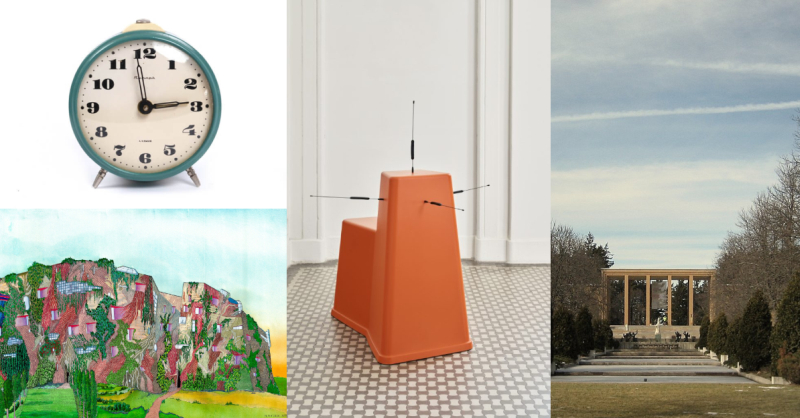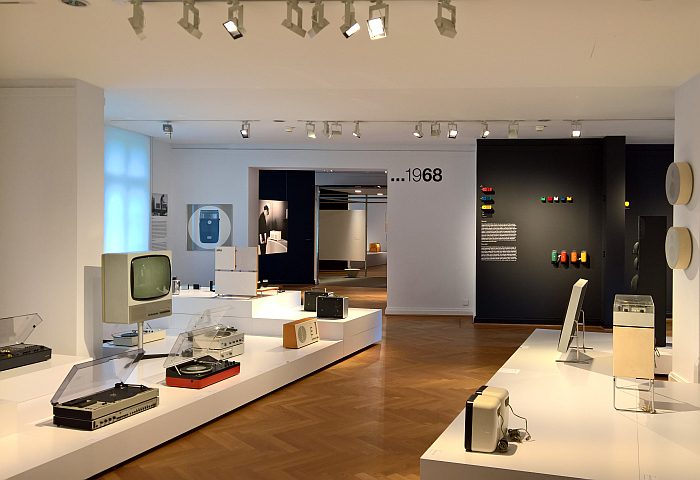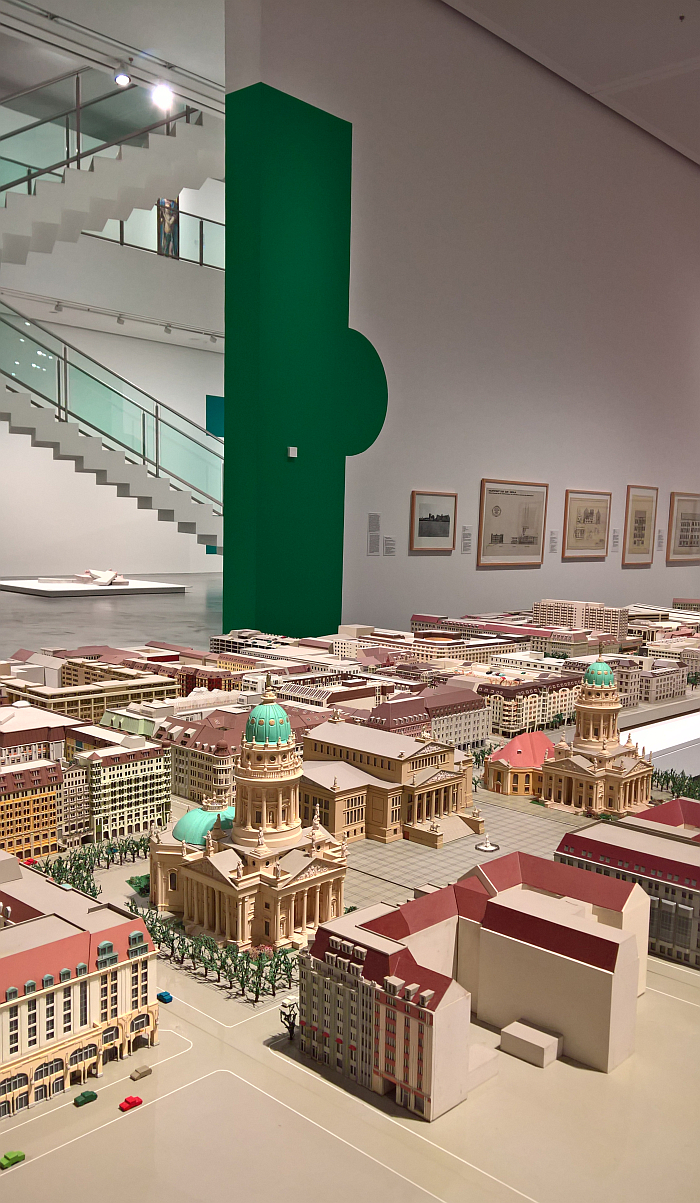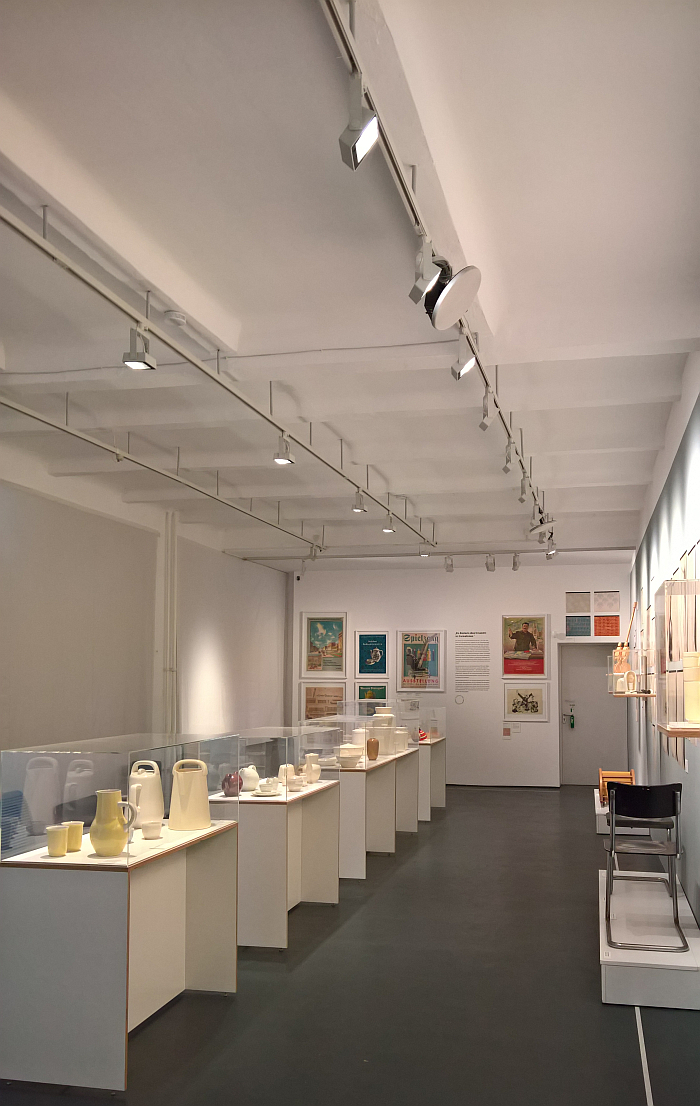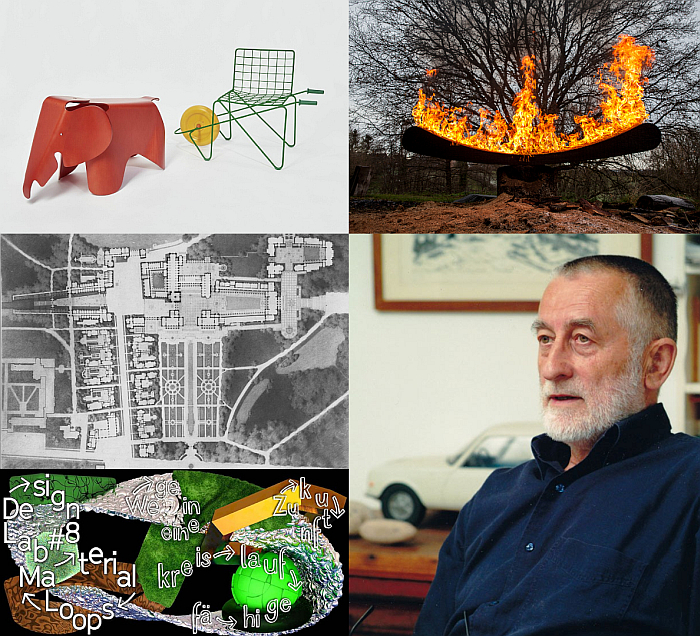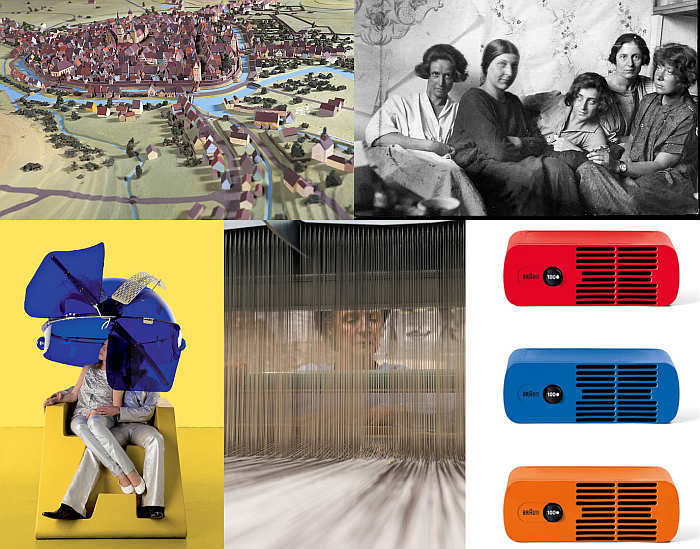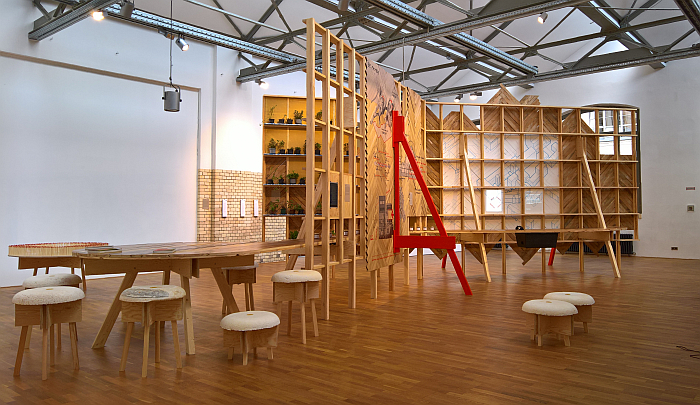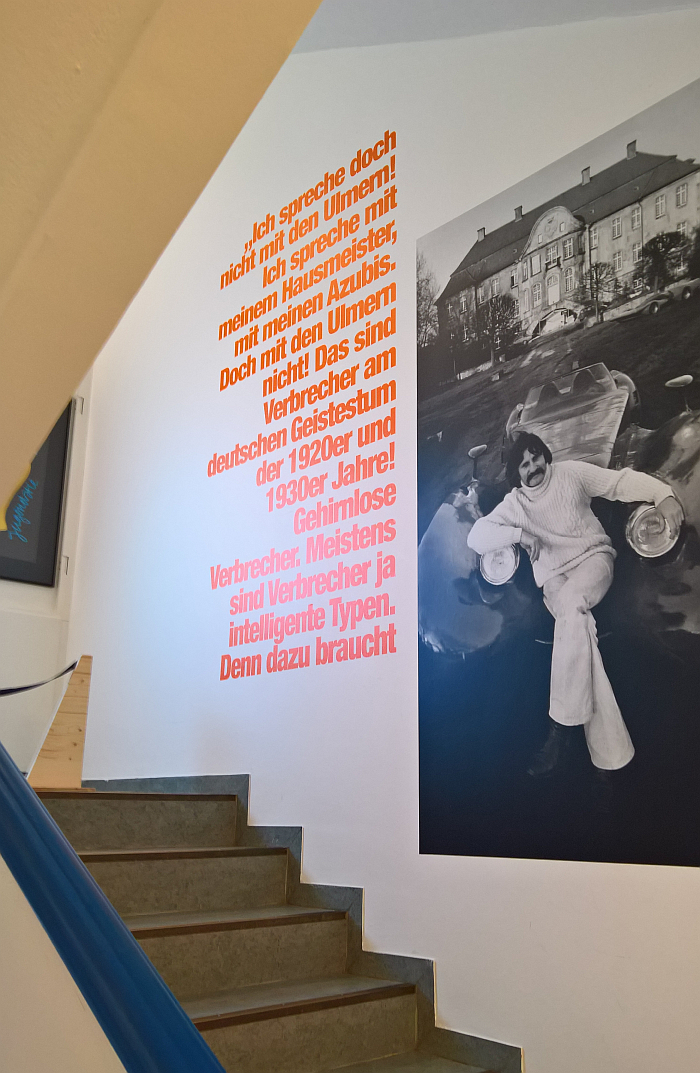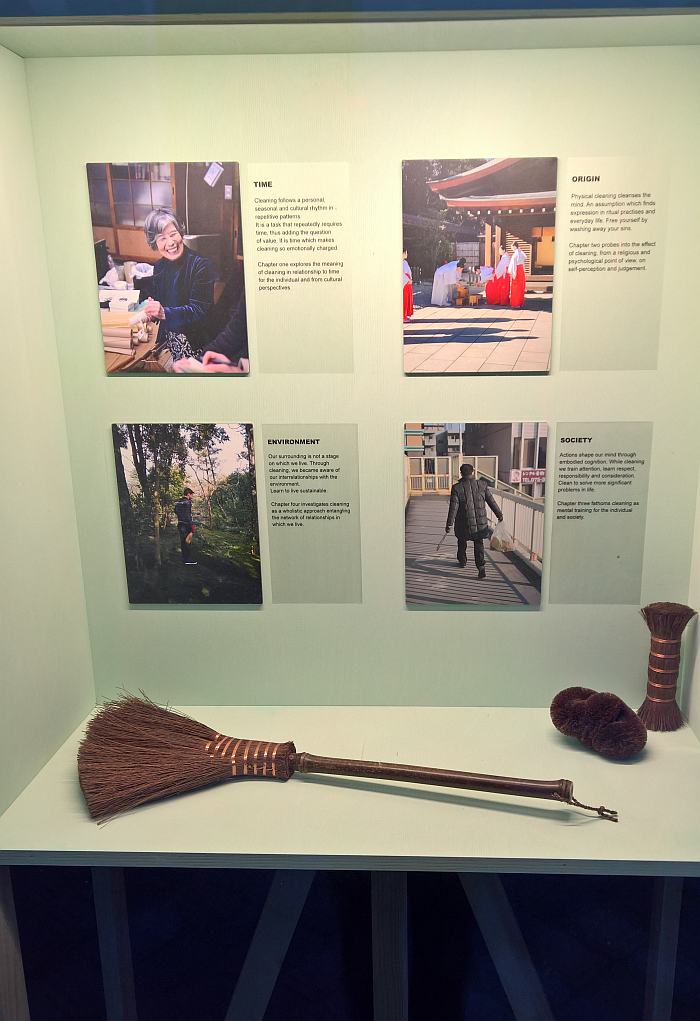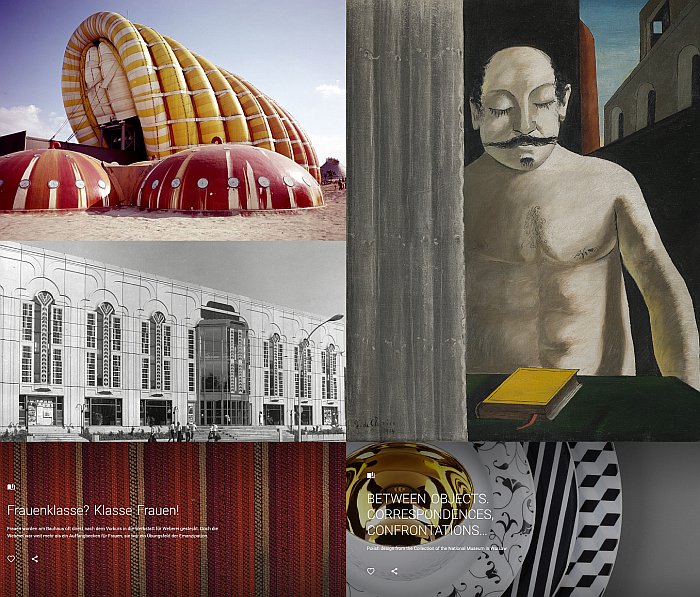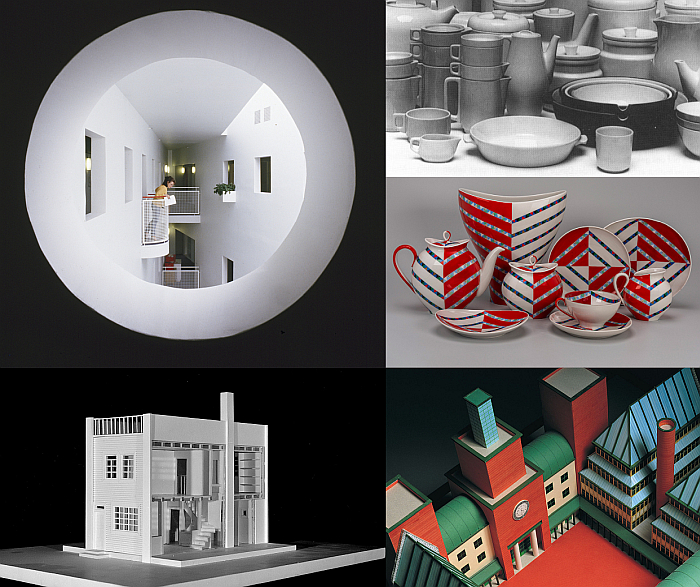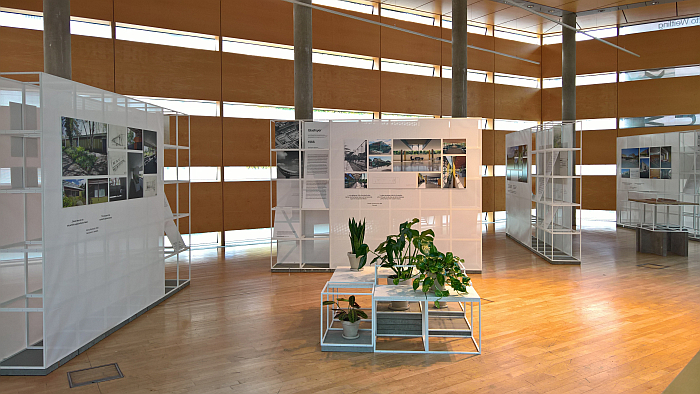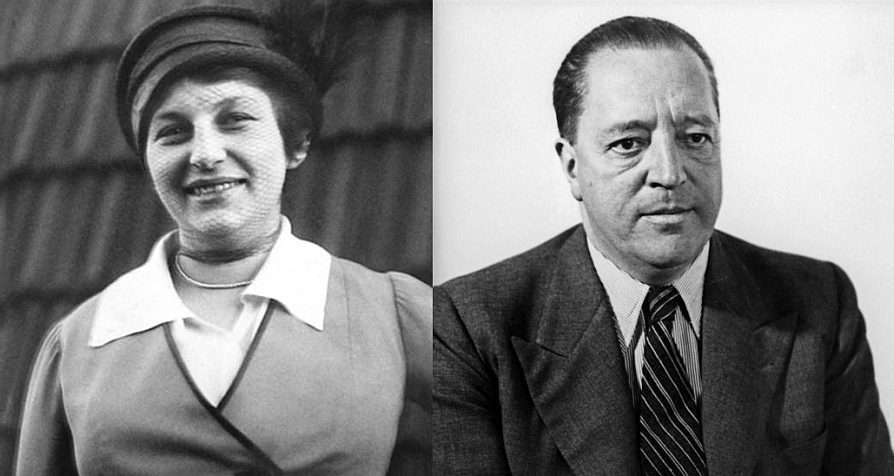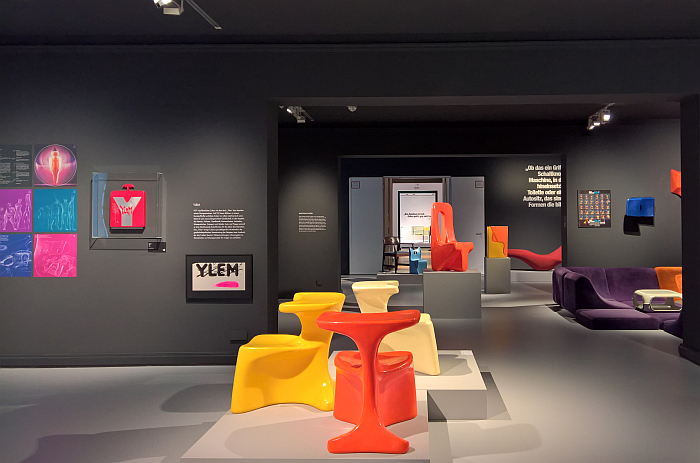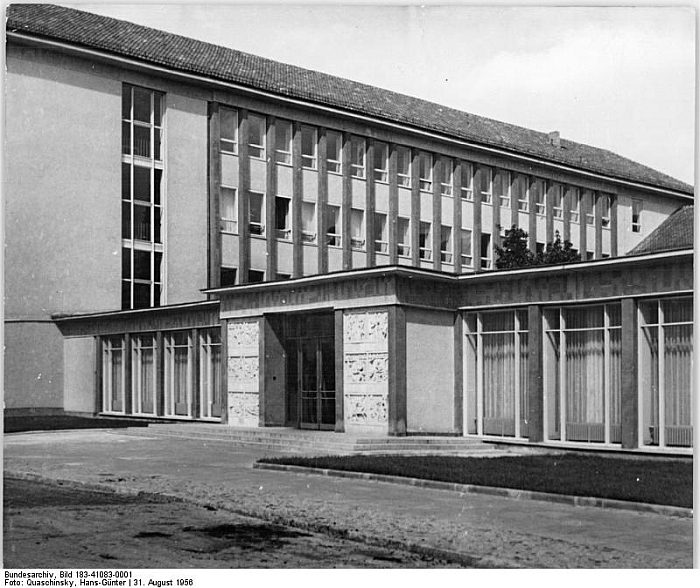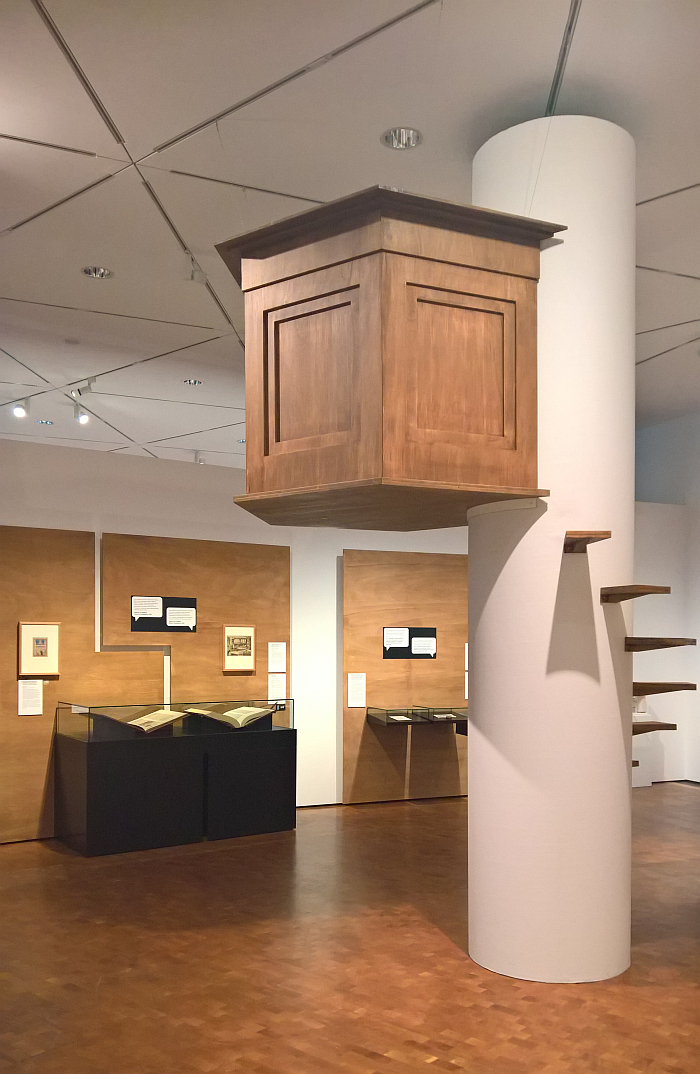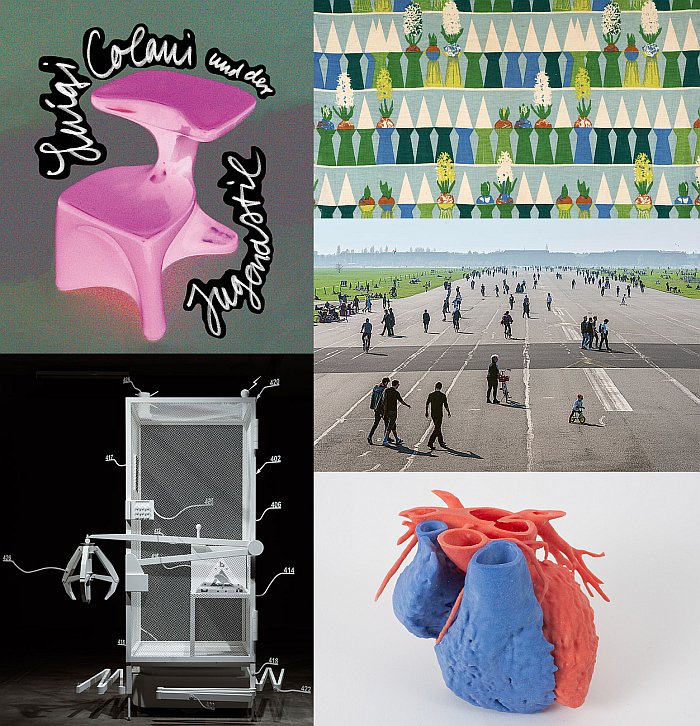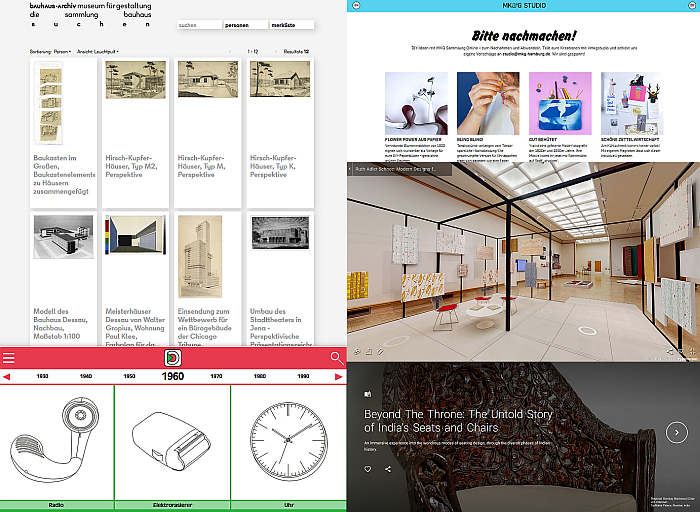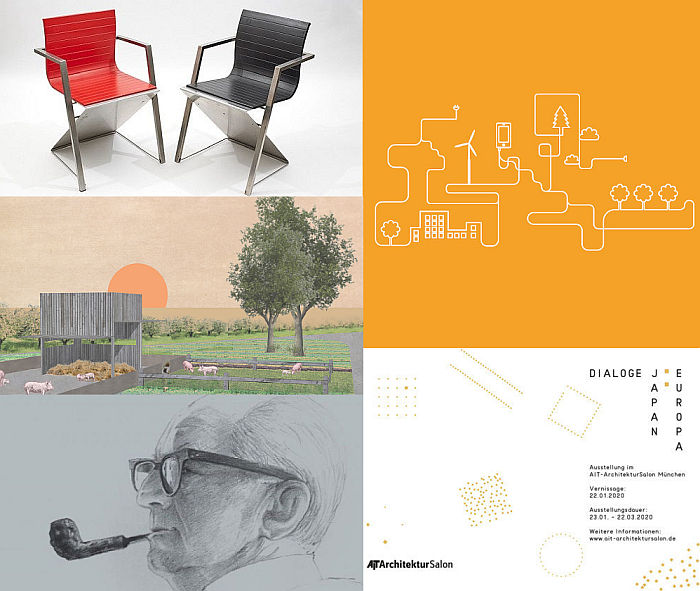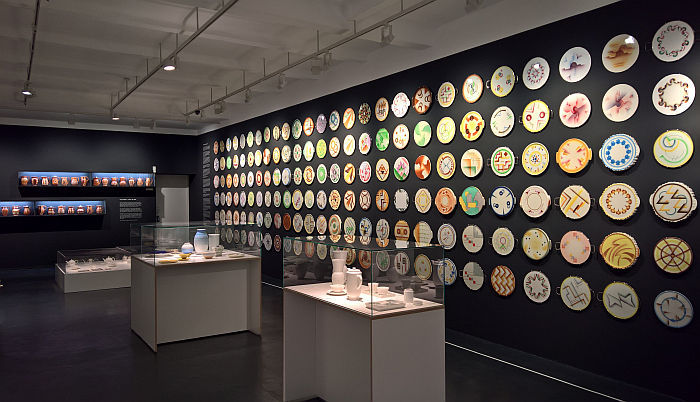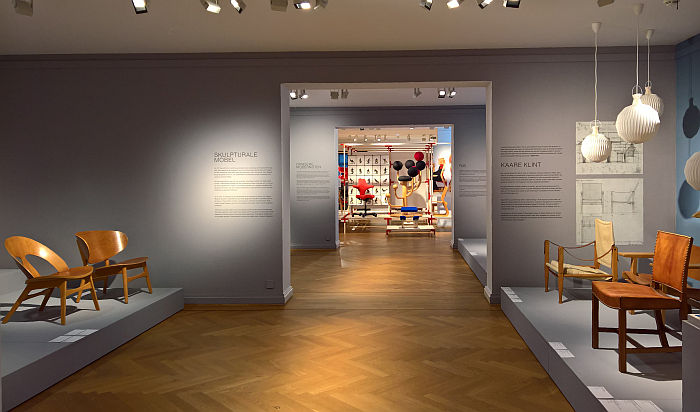Konstantin Grcic. New Normals at Haus am Waldsee, Berlin
Familiar as our objects and rituals of daily life are to us, to someone from the 16th century they would appear most, most, odd, just as their familiar 16th century objects and rituals would appear most, most, odd to someone from the 11th century: yet as Simon & Garfunkel teach us “that’s not unusual, No, it isn’t strange”, for as societies develop they acquire new objects and rituals, daily life continually evolves anew alongside, and in conjunction with, new objects and new rituals. And if we were to be acquainted today with objects and rituals from future societies we would consider them most, most, odd.
With the exhibition New Normals at Haus am Waldsee, Berlin, Konstantin Grcic presents some exceedingly odd things and in doing so invites us all to reflect on the fact that that which is not yet, will one day be…….
5 New Architecture & Design Exhibitions for January 2022
According to Germanic folklore, “If January is frosty and cold, a green woodland will soon entice us”.
The implication being that a severe January is the necessary pre-requisite not only for a timeous spring bursting forth with new life, but also for a warm, (meteorologically) settled, summer.
But in the frost and cold and dark and endlessness of January that green (deciduous) woodland is still a long way off, is unimaginable, is unreachable, is almost mythical; however, protection, and distraction, from January can always be found in the warmth and stimulation and light of a good architecture or art or design exhibition.
Our five enticing shelters from the climatic vagaries of January 2022 can be found in Berlin, Humlebæk, Bloomfield Hills, Moscow and New York…….
Braun 100 at the Bröhan-Museum, Berlin
Braun occupy a special, ¿unique?, position not only in the mythology of product design but also in the (hi)story of West Germany; arguably no brand is as closely related with and to West Germany as Braun.
With the exhibition Braun 100 the Bröhan-Museum, Berlin, explore the development of design at Braun in the post-War decades and in doing so help one approach differentiated understandings of not only Braun and Braun design, but also of the relationships between Braun, design and West Germany…….
Anything Goes? Berlin Architecture in the 1980s at the Berlinische Galerie, Berlin
As the worldline of architecture’s spacetime continuum moves through the 1970s and ever further into the 1980s it becomes increasingly blurry, indistinct, harder to confidently follow: established conventions and systems, acknowledged fundamental and/or necessary rules of architecture become increasingly difficult to locate.
Indeed were there rules in 1980s architecture?
With the exhibition Anything Goes? Berlin Architecture in the 1980s the Berlinische Galerie explore the architectural developments in the, then, two Berlins, and in doing so not only allow one to approach better understandings of the architectural development of the, now, one Berlin, but also to question the putative lawless of 1980s architecture…….
The Early Years. Mart Stam, the Institute and the Collection of Industrial Design at the Werkbundarchiv – Museum der Dinge, Berlin
In 1950 the Dutch architect and designer Mart Stam told a conference in Leipzig, “when I speak here for a group of individuals active in industry about the problem of industrial design, I do so because I believe that it is necessary for us to concern ourselves in detail with the question of industrial design, and also because I believe that through intensive work and cooperation in this field we can contribute to increasing the cultural quality of our goods.”1,2
With the exhibition The Early Years. Mart Stam, the Institute and the Collection of Industrial Design the Werkbundarchiv – Museum der Dinge Berlin elucidate that Stam did more than simply speak about “the problem of industrial design” in the, then, fledgling East Germany, that Mart Stam wasn’t the only person in 1950s East Germany interested in “increasing the cultural quality of our goods”, if ideas about how one defined “increasing” and “cultural quality” varied greatly; and in doing so allows insights into the development of industrial design in East Germany……
5 New Architecture & Design Exhibitions for June 2021
“I wonder what it would be like to live in a world where it is always June”, ponders Anne Shirley in Lucy Maud Montgomery’s 1915 novel Anne of the Island.
“You’d get tired of it”, sighs her adoptive mother Marilla Cuthbert by way of reply.
“I daresay”, responds Anne, “but just now I feel that it would take me a long time to get tired of it…”
Thoughts we very much concur with as we survey and contemplate the varied profusion of new architecture and design exhibitions sprouting forth in June 2021. Who could ever tire of such a joyous abundance? Who?
Our five recommendations from that early summer crop can be found in Leipzig, Hornu, Berlin, Bloomfield Hills and Chemnitz…….
smow Song Contest 2021
After a long, challenging, year the smow Song Contest finds itself exactly where it was: Rotterdam.
Not just the location, but the stage, the decoration, the costumes, even the bier en frieten exactly as they were twelve months ago.
The decisive, defining, difference between the 2020 smow Song Contest and the 2021 smow Song Contest being the new understandings, the new perceptions, the new perspectives, the new vitality, the new passions, the new desires, the new old new, articulated by the contest’s motto: Open Up!
5 New Architecture & Design Exhibitions for April 2021
As the 19th century English poet Robert Browning so very, very, nearly phrased it:
Oh, to be in Berlin, Vienna, Chemnitz, ‘s-Hertogenbosch, or Berlin (again),
Now that April’s there,
And whoever wakes in Berlin, Vienna, Chemnitz, ‘s-Hertogenbosch, or Berlin (again),
Sees, some morning a most interesting, entertaining and instructive sounding architecture and/or design exhibition,
While the chaffinch sings on the orchard bough……
Caring for what already exists. Ten Architectural Strategies at the Deutsche Architektur Zentrum, Berlin
With the 2021 Pritzker Architecture Prize being awarded to Anne Lacaton and Jean-Philippe Vassal international attention has become focused on architectural strategies geared towards maintaining existing buildings in the face of evolving economic, social, demographic, et al, realities rather than demolishing and erecting new ones by way of a response; and also of the value, the economic, the social, the cultural and the environmental value, of reusing, remodelling and reimagining that which exists rather than replacing through rebuilding and replanning.
The Deutsche Architektur Zentrum Berlin’s exhibition Caring for what already exists. Ten Architectural Strategies was developed, and was scheduled to open, long, long, before Lacaton & Vassal’s selection; however, in asking questions of how buildings and urban spaces could, should, must?, evolve with those societies and communities around them, questions of the relationships between built environments and the communities with which they co-exist, its delayed opening has not only brought its themes a new popular relevance to compliment their unquestioned importance, but also allows it to help contribute to the sharpening or our collective foci in context of architecture and our built environments….
Luigi Colani and Art Nouveau at the Bröhan-Museum, Berlin. Reprise…. Or, Luigi Colani and the HfG Ulm
In context of the exhibition Luigi Colani and Art Nouveau, the Bröhan-Museum Berlin’s staircase is emblazoned with a long quote from Colani, a long and typically outspoken quote, in which Luigi Colani denigrates the Hochschule für Gestaltung Ulm, that design school which has such a prominent and pre-eminent position in popular understandings of design in post-War West Germany; and who for Luigi Colani were “defrauders of the German creative spirituality of the twenties and thirties! Imbecilic criminals.”1
A quote that not only neatly epitomises the (consciously cultivated) Colani communication strategy, nor only leads one to reflect on Colani’s own relationship to inter-War design in Germany, but for all leads one by necessity to question the validity of the accusation; and thereby to reflect on the relationship(s) between the Hochschule für Gestaltung Ulm and the “German creative spirituality of the twenties and thirties”, and by extrapolation to reflect on post-War design in West Germany……..
studio b severin – Cleaning against the Dictatorship of Efficiency at feldfünf, Berlin
Cleaning is a chore.
If only we could get through life without the necessity of dusting, sweeping, washing, polishing et al…….
With the project Cleaning against the Dictatorship of Efficiency Birgit Severin and Guillaume Neu-Rinaudo a.k.a. studio b severin explore cleaning, its rituals, contexts, symbolism, functions, psychology, and in doing so enable differentiated perspectives on both that ubiquitous chore and the necessity in the necessity of dusting, sweeping, washing, polishing et al…………
5 (New) Architecture & Design Exhibitions for January 2021
The only certainty as 2020 flows into 2021 is the ongoing uncertainty. An uncertainty that is increasingly being understood as an ongoing certainty and thereby turning ever more “plans” into “options”.
And also causing a great many global architecture and design museums to skip over the first quarter of 2021 as if weren’t there, and to move their new exhibition openings to April and beyond.
A state of affairs which on the one hand means there are currently fewer lonelier locations than any given museum’s “future exhibitions” listings; but on the other hand means that much as the coldest hour is the one just before the dawn, so it is increasingly certain, as in “old” certain, that the paucity of new exhibitions opening in the first quarter of 2021 will cede to a flood come spring. And so you can now plan, as in old “plan”, to visit an exhibition a day come summer. And still have options. Old and new
And a state of affairs which has to a degree forced our hand and produced a hybrid recommendations list for January 2021: offline exhibitions in Berlin, Hamburg and Metz; online exhibitions from Warsaw and Weimar/Dessau.
And as ever in these times, if you do feel comfortable visiting any museum, please familiarise yourself in advance with the current ticketing, entry, safety, hygiene, cloakroom, etc rules and systems. And during your visit please stay safe, stay responsible, and above all, stay curious…….
5 New Architecture & Design Exhibitions for December 2020
To paraphrase the Propellerheads, this is just a little bit of a blog post repeating…
For much as with our November 2020 exhibition recommendations, so some of our December 2020 exhibition recommendations won’t be opening. Or at least not in December 2020.
But then as now are in still in our list.
On the one hand because they will open, and is an important part of any pleasure not the expectation and anticipation?
And on the other hand, because that which makes an exhibition recommendable in advance of its opening, that which makes its anticipation and expectation so pleasurable, is that it promises to present a rarely explored subject and/or promises to explore a regularly presented subject from a new and/or fresh and/or deeper perspective. And thus a recommendable exhibition is also a nudge that there may be more to learn and understand about architecture and design than you were aware of. And thus a stimulus for your own research. And what better season than winter for that research?
Our five recommendations/stimuli/nudges for December 2020 can be found in Berlin, Vienna, Helsinki, Rome and St Petersburg.
And as ever in these times, if you do feel comfortable visiting any museum, please familiarise yourself in advance with the current ticketing, entry, safety, hygiene, cloakroom, etc rules and systems. And during your visit please stay safe, stay responsible, and above all, stay curious….
Gesamtkunstwerke – Architecture by Arne Jacobsen and Otto Weitling in Germany at Felleshus, The Nordic Embassies, Berlin
Outwith his native Denmark, the country home to the most architectural works by Arne Jacobsen is Germany.
Yet the vast majority of them remain popularly unknown.
As does Arne Jacobsen’s partner on his German projects: Otto Weitling
With the showcase Gesamtkunstwerke – Architecture by Arne Jacobsen and Otto Weitling in Germany, the Felleshus Berlin not only set the record straight but allow for some fresh reflections on both Arne Jacobsen and our relationships to and with architecture and our built environments……
The Furniture of Lilly Reich and Ludwig Mies van der Rohe: The Early Years
In 1977 Ludwig Glaeser, curator of the Mies van der Rohe Archive at the Museum of Modern Art, New York, opinioned that “it is certainly more than a coincidence that [Mies van der Rohe’s] involvement in furniture and exhibition design began in the same year as his personal relationship with Lilly Reich.”1
A statement that has in many regards come to define understandings of the furniture designs of both Ludwig Mies van der Rohe and Lilly Reich.
An understanding that “is certainly more than a coincidence”. It is wrong. Certainly in terms of furniture design.
And a statement and understanding whose clarification not only provides an excellent starting point for an exploration of the furniture designs of Lilly Reich and Ludwig Mies van der Rohe, but also for some reflections on the (hi)story of furniture design……..
Luigi Colani and Art Nouveau at the Bröhan-Museum, Berlin
In 1977 the German designer Luigi Colani demanded a “renaissance of Art Nouveau”1
What he meant, why he meant it, and if it is something we should all fear, can be explored and considered in the exhibition Luigi Colani and Art Nouveau at the Bröhan-Museum, Berlin…….
smow Blog Design Calendar: September 22nd 1952 – Mart Stam suspended as Rector of the Hochschule für angewandte Kunst, Berlin
As a general rule we prefer to focus the Design Calendar on positive events, it just seems more, well, positive; however, sometimes a negative event is more illustrative of a situation, provides for better access to a story.
An event such as Mart Stam’s beurlauben, suspension, as Rector of the Hochschule für angewandte Kunst, Berlin, on September 22nd 1952.
The unhappy end of Mart Stam’s not altogether joyful sojourn in East Germany.
But also a moment that allows for some focussed considerations on both the person Mart Stam and on his understandings of art, architecture and design.
From Luther to Twitter. Media and the Public Sphere at the Deutsches Historisches Museum, Berlin
On October 31st 1517 Martin Luther published his 95 Theses, his Disputation on the Power and Efficacy of Indulgences, his criticism of the contemporary Catholic church. 95 theses which fired a debate and discourse that, ultimately, led to the splitting of the, until then, all-powerful Catholic church, an event which was to have consequences far, far, beyond religious practice and power, and which was arguably one of the single most important moments in the development of European society.
According to the popular telling of (hi)story, Martin Luther published his 95 Theses by…… nailing them to the door of the Schlosskirche in Wittenberg.
Imagine if @DrMartinLuther95 had had 60 million followers on Twitter…..
With the exhibition From Luther to Twitter. Media and the Public Sphere the Deutsches Historisches Museum, Berlin, explore developments in the nature of public debate and discourse and the role of evolving media and technology in those developments.
5 New Architecture & Design Exhibitions for September 2020
Tuesday September 22nd marks the 2020 Southward Equinox, and thus the start of autumn in the northern hemisphere, and of spring in the southern hemisphere. Two seasons known throughout history for the vagaries, capriciousness, of their weather.
And thus two seasons perfectly suited to a longer architecture and design, or art, museum visit.
Our recommendations for four new showcases opening in September (autumn) 2020 can be found in Berlin, Kolding, Düsseldorf and Berlin (again); our recommendation for a new showcase opening in September (spring) 2020 can be found in Sydney.
And as ever in these times, if you do feel comfortable about visiting any museum, please familiarise yourself in advance with the current ticketing, entry, safety, hygiene, cloakroom, etc rules and systems. And during your visit please stay safe, stay responsible, and above all, stay curious….
5 New Architecture & Design Exhibitions for August 2020
“What August dosen’t do, September puts right”1 declared Johann Wolfgang Goethe.
And loathed as we are to contradict Goethe. He’s wrong.
August may be a time when one can allow oneself a little more freedom than the rest of the year; however, that which we call life is the actions, experiences, leanings, emotions of each month consecutively and sequentially building on, informing and evolving one-another, a month of inactivity is a month of moments missed, and hoping that September can in some form rectify for a laxness in August is wishful thinking.
And this year not particularly sensible: for as we all understand, that which we don’t do in August may come back to bite us in September.
Thus, on this occasion, ignore Goethe, and use August wisely, sagely and as a chance to get more out of September. And subsequently get more out of October. November. Etc. Etc. Etc.
Our five recommendations for meaningful things to do in August 2020, apart from regular hand washing, keeping abreast of local developments/advice and maintaining mutual respectful relations with those around you, can be found in Tallinn, Brussels, Malmö, Amsterdam and Berlin.
And as ever in these times, if you are planning visiting any museum or exhibition, please familiarise yourself in advance with the current ticketing, entry, safety, hygiene, cloakroom, etc rules and systems. And during your visit please stay safe, stay responsible, and above all, stay curious….
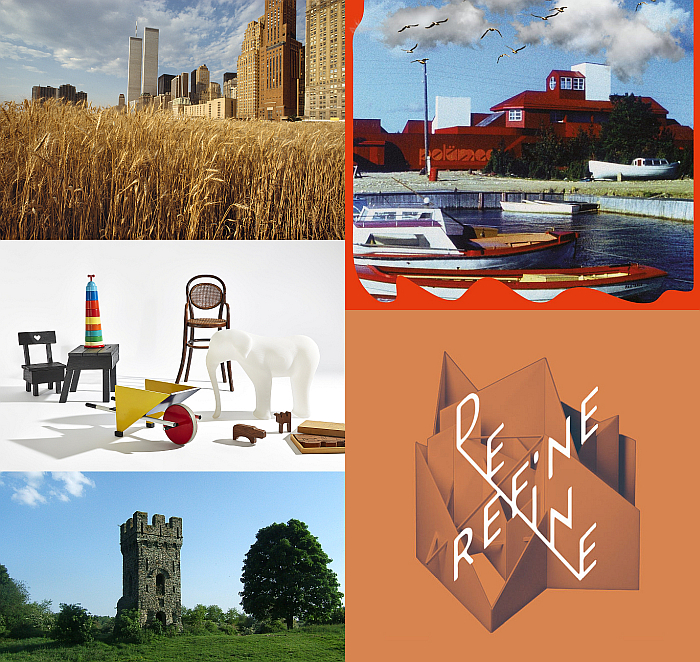
smow Song Contest 2020
In a year in which the familiar glow of many a beloved cultural event is missing, one beacon continues to shine.
As a virtual, and in many regards virtual, event the smow Song Contest is one that can be staged regardless of prevailing physical social distancing regulations and physical travel restrictions.
And while virtual closeness and virtual travel can never, and must never be allowed to, replace the physical, the 2020 smow Song Contest does allow us all an opportunity to cross great distances, to come together, to stay safe, to stay responsible, but for all to stay dancing…..
5 Online Architecture & Design Exhibitions for May 2020
While we’d all much rather physically visit architecture and design museums, our current enforced virtual patronage does allow us all an excellent opportunity to begin to understand architecture and design museums as more than just an exhibition space with shop and café, and to begin to learn to interact with them, and for all their collections, in new, proactive, manners. To understand architecture and design museums as tools as much as institutions.
And while a virtual visit can never replace a physical one, it can help us extenuate and expand our understandings and thereby allow us to take even more from that physical visit. And those physical visits will return.
Until then, volume two of our online recommendations takes you from your sofa to Berlin, Hamburg, Bloomfield Hills, Mumbai, München, and hopefully and awful lot further…..
5 New Architecture & Design Exhibitions for January 2020
Off late, and certainly in a European context, January has become a month of forgoing, eschewing and general abstention, with campaigns such as Dry January and Veganuary extolling us to utilise our guilt at our dangerous, decadent, gluttony of late December as an impetus to radically alter our behaviour, as a catalyst for reduction.
And while less is unquestionably more, and thus worth striving for, fundamental change is invariably more sustainably and meaningfully achieved through better understandings rather than by sudden, extreme, knee-jerk, changes; that more information can lead to less harmful choices. More information and better understandings such as those an architecture or design exhibition can provide.
We can’t promise the following five will necessarily change your (unhealthy) relationship to alcohol or food, they should however allow for new perspectives on the world around us, new perspectives which should allow for new reflections on your relationship to that world, and, potentially, a healthier, happier you. And a healthier, happier world. Potentially.
Decoration as Trespass? @ the Werkbundarchiv – Museum der Dinge, Berlin
For all the popular associations of the inter-War years with the reduced and the paired down, with objects whose value was deemed inherent rather than something one added, one must remember that the inter-War years were also a period that brought forth the colours and confusions of Surrealism and the glitz and glamour of Art Déco: The Roaring of the Twenties being as much about a self-confidence of expression as a joyous relief that the war years were, once and for all, over.
And thus that both the reserved and the ornate existed side by side in the inter-War years, if not necessarily comfortably; and this tension between decorative ornamentation and a more reserved understanding of design are explored in the Werkbundarchiv – Museum der Dinge’s exhibition Decoration as Trespass?
Nordic Design. The Response to the Bauhaus @ The Bröhan Museum, Berlin
Having started this Bauhaus Weimar centenary year by exploring the path from Arts and Crafts to Bauhaus, the Bröhan Museum Berlin end this Bauhaus Weimar centenary year by exploring the path from Bauhaus to Arts and Crafts Scandinavia.
Or more accurately put, by exploring Nordic Design. The Response to the Bauhaus.
